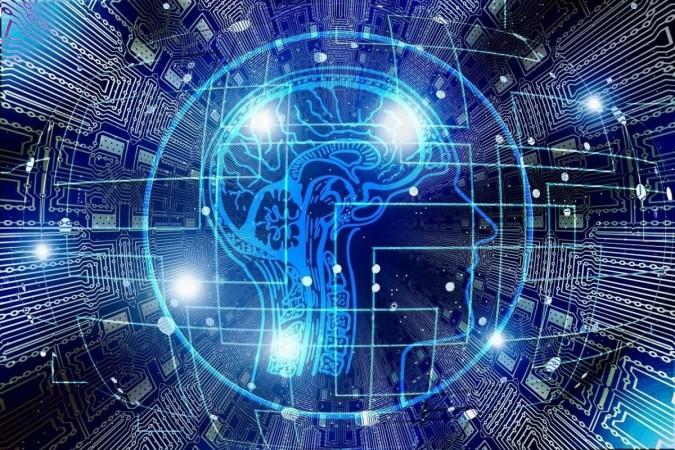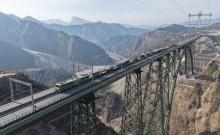
On June 15, 2025, headlines around the world announced a watershed moment: Researchers at MIT's Department of Mechanical Engineering, in collaboration with NVIDIA and the ETH Zurich Robotics Center, unveiled "Atlas-Next"—the "first autonomous robot demonstrator to independently understand, predict, and manipulate unseen physical objects in an open environment, reliably reasoning through friction, inertia, and structural uncertainty.
"This is no longer simulated perception—Atlas-Next reads the world's physical complexity as fluently as any expert engineer," stated Dr. Elena Markova, MIT's principal investigator, at the unveiling.
The Financial Times' front page declared, "Physical AI: The Day Robots Learned the Laws of Nature."
This milestone marks the inflection point foreseen by leading visionaries and scientists: the dawn of Physical AI when artificial intelligence ceases to be abstract and becomes a primary agent in the domain of matter.
Beyond Perception and Generation: The Age of Physical Intelligence
For decades, AI innovation focused on software, data, and virtual perception solving challenges in recognition, language, and knowledge representation. "Generative AI" astounded us, yet always remained tethered to the logic of bits and pixels.
Today, as global attention shifts to energy security, supply chains, sustainable infrastructure, and planetary health, the world demands machines able to operate with expert agency in the tangible domain. This is Reasoning AI maturing into*Physical AI where intelligence is quantified not by data alone, but by its ability to act effectively under real-world, real-time constraints.
"A robot doesn't simply recognize a glass beaker, it interprets its center of gravity, judges its fragility, calculates torque, and makes inferences about invisible threats vibrations, micro-cracks, heat flows," says Prof. David Ingram, Oxford Robotics Institute.
Unlike perception systems, Physical AI excels at agentic reasoning: integrating control theory, mechanics, sensor fusion, and real-time adaptation to navigate uncertainty and causality in the built environment.
2030: Envisioning the Impact Across Sectors
Industry and Advanced Manufacturing
By 2030, intelligent, adaptive robotics will underpin the global manufacturing ecosystem. AI-powered micro-manufacturing plants, equipped with self-calibrating robotics and AI-driven material science, will enable "factories on demand." These units will autonomously prototype, test, and iterate physical products at speeds previously unimagined.
"Physical AI brings Moore's Law to the material world - prototyping cycles compress from years to weeks," notes Rachel Kim, Intel R&D.
Energy, Resources, and Infrastructure
Physical AI will transform extraction, transmission, and risk management. National grids will be monitored by drones and smart robots, capable of climbing transmission lines, diagnosing faults, and repairing infrastructure in hazardous conditions optimising energy flows to adaptively balance renewables and demand.
Healthcare and Biomechanics
Hospitals will deploy surgical assistants and exoskeletons powered by physics-aware AI, delivering personalized therapy, transforming surgery, and democratizing access to complex procedures.
"It's no longer just automation, it's a revolution in patient empowerment and biomechanical synergy," says Dr. Sunita Pillai, Mayo Clinic.
Autonomous Mobility and Logistics
By 2030, fleets of AI-powered ground and aerial vehicles will navigate urban and rural landscapes—sensing and reasoning through weather, terrain, and unstructured scenarios.
"These systems make second-to-second judgments based on physical principles—calculating rolling resistance, slip angles, and dynamic stability on the fly,"* states Marian Soros, Amazon Robotics.
Prescriptions for the Future: What Nations, Enterprises, and Individuals Must Do
Governments
- Establish national Physical AI research hubs combining robotics, control engineering, advanced materials, and computational physics.
- Prioritize funding for STEM infrastructure at every educational level, and legislate for agile regulation of cyber-physical integration and safety.
- Launch moonshot programs in sustainable manufacturing, green materials, and robotics-for-resilience.
Corporates and MSMEs
- Pivot R&D investment from pure software to hybrid cyber-physical systems and digital twins.
- Partner with interdisciplinary academic centers; test and iterate AI-enabled hardware at scale.
- Retrain technical staff in robotics, sensor systems, control engineering, and AI-physics fusion.
Academia
- Create curricula and research programs at the intersection of AI, physics, control systems, and robotics.
- Embed hands-on, maker-centric experimentation as a core of STEM education.
- Accelerate the translation of physical sciences breakthroughs into industrial and societal applications.
Professionals, Youth, and Children
- Engineers, scientists, and technologists: Master control theory, cyber-physical system integration, kinematics, thermodynamics, and embedded sensor networks.
- Youth and children: Engage in maker culture robotics clubs, engineering competitions, hands-on labs, and cross-disciplinary projects that teach cause and effect in the material world.
What Must Start Now: Urgency and Opportunity
The most critical actions:
Commit to large-scale, open-access physical AI experimentation platforms, integrated into the educational mainstream.
Accelerate regulatory sandboxes and public-private consortia for deployment in critical sectors.
Elevate public literacy in the principles of physical reasoning, mechanics, and cyber-physical safety.
"Those who master the merger of code and the physical universe—who bridge the digital with the tactile, the analytic with the experimental—will define the next wave of human progress," opines Dr. Vibha Singh, IEEE Robotics & Automation Society.
The New Competitive Frontier: The Laws of Nature, Amplified
The decisive industrial, social, and scientific leaps of the next decade will be achieved not in algorithms alone, but in the convergence of artificial intelligence with advanced physical sciences. Those who lead will be those who embrace not the abstraction of intelligence but its incarnation in the real world.
History will remember the 2020s not for what AI wrote, but for what AI built and for the world it transformed by learning, at last, to reason in matter.
[Major General Dr Dilawar Singh is an Indian Army veteran who has led the Indian Army's Financial Management, training and research divisions introducing numerous initiatives therein. He is the Senior Vice President of the Global Economist Forum AO ECOSOC, United Nations and The Co President of the Global Development Bank.]















